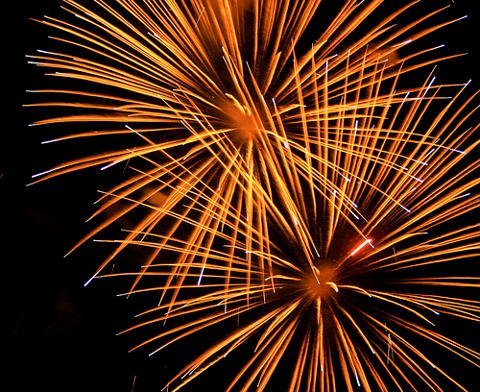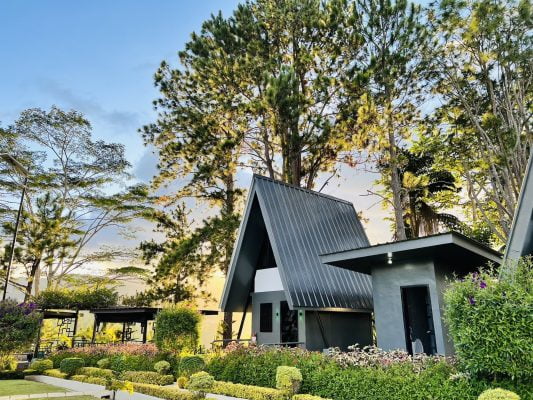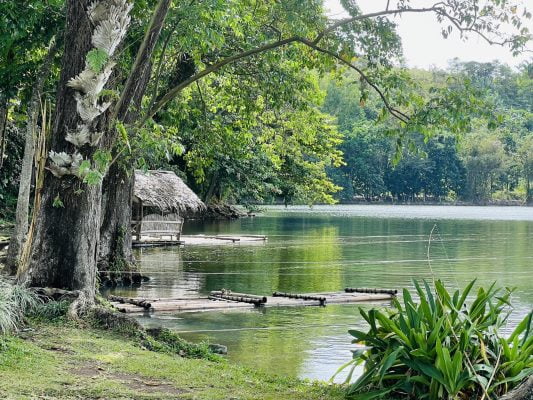
As a new year opens, Filipinos prep themselves for another 365 days of festivals, town fiestas, trade fairs, competitions and full range of other fun events. The Filipino has a naturally festive spirit and this shines through from the first until the last day of the year.
January is a month of grand festivals in the Philippines. At the center of most festivities is the Sto. Nino, the image of the Child Jesus which is venerated by majority of Filipino Catholics. The image housed in the Basilica Minore de Sto. Nino de Cebu in Cebu City is said to have been the very first religious image brought to the Philippines by explorer Magellan as a gift to Rajah Humabon.
Visiting the Philippines during this time of the year has a lot of advantages. Aside from experiencing the merry atmosphere of the cities during festivals, the weather is ideal for sightseeing and beach bumming. Amihan or the northeast monsoon starts to blow into the islands, bringing in warm breezes and clear sunny days.
While January in the Philippines is considered high tourist season, attractions are not yet so crowded and there is plenty of room to explore and relax. There are better chances of having a piece of shore all to yourself for a few hours and accommodations are a little more affordable than during peak season.
Here’s a list of some festivals you can plan your holiday around. For official dates of these events this year, sign up for our newsletter where we announce them.
New Year’s Day
Nationwide
Of course this is not an exclusively Filipino event but there is a distinct character to the Filipino New Year celebration. Aside from the usual fireworks, countdowns and feasts, there are traditions and superstitions that take celebrating the coming of a fresh year to a new level. To spend New Year’s Eve with Filipinos would be quite an entertaining experience: you will see mothers banging pots and pans to drive away bad luck, children jumping as high as they can to grow taller, round fruits on the table to signify money and the entire family wearing polka dots-designed garments to attract abundance.
Hinugyaw Festival
Koronadal City, South Cotabato
The word “hugyaw” means roar in laughter or merriment. Koronadal City’s Hinugyaw Festival brings color and fun to locals and visitors through different cultural and social events. Hinugyaw sa Dalan, the festival’s highlight is a street dancing competition with contingents from neighboring towns. Other activities include Marbeleño Mardi Gras, Mister and Miss Koronadal pageant, food fests and several concerts.
Bailes de Luces
La Castellana, Negros Occidental
The town of La Castellana may be little but their festival Bailes de Luces (Dance of the Lights) is as grand as it can get. Unlike much of Philippine Festivals which are staged under the scorching tropical sun, Bailes de Luces is held at night to accentuate the interplay of lights and music. The festival is held to celebrate the town’s charter and as a grandiose way to end the Christmas season. There are street dancing and arena dancing competitions, among other activities.
Feast of the Three Kings
Nationwide
Traditionally, the Feast of the Three Kings marks the end of the Christmas season in the Philippines. The feast remembers the three magi who followed the Star of Bethlehem which led them to the Child Jesus sleeping in a manger. There are no special events during the feast save for a few town fiestas here and there. Masses are held after which a family may share a special meal. After the Feast of the Three Kings, Christmas decorations are brought down and replaced by hearts in preparation for February’s Valentine’s Day.
Coconut Festival and Trade Fair
San Pablo City, Laguna
This award-winning agricultural event in San Pablo City is a perfect excuse to escape from the hustle of Metro Manila and indulge in Colette’s heavenly buko pie. But the festival is not just about the pie, it celebrates the coconut’s brand as the “tree of life” by showcasing local products made from all parts of the tree: from wines and sweets to baskets and useful handicrafts.
Talong Festival
Villasis, Pangasinan
Trust Filipinos to celebrate the simplest things in life, in this case the eggplant. The town of Villasis is the top eggplant grower in the country thus the celebrations. The Talong Festival is highlighted by street dancing, cook offs and eggplant grilling.
Feast of the Black Nazarene
Quiapo, Manila
The Black Nazarene (Mahal na Poon Nazareno for Filipinos) is one of the most venerated religious images in the Philippines. It is housed in the Basilica Minore of the Black Nazarene, also known as Quiapo Church in Metro Manila. The Feast of the Black Nazarene draws millions of devotees into the streets while the statue of the kneeling Christ carrying a cross is brought out of the church. Jostling is very common during this event as devotees clamor to touch the icon or wipe their towels on the miraculous statue.
Trivia: The statue was originally fair in complexion but turned black after surviving a fire in the galleon during its transit from Mexico.
Ati-atihan Festival
Kalibo, Aklan
Shouts of “Hala Bira” fill the air as dancers painted with soot take to the streets during the Ati-Atihan Festival of Kalibo, Aklan. Ati-Atihan, held in honor of Sto. Nino, is considered the Mother of all Festivals and it is also one of the wildest in the country. Everyone is encouraged to paint their faces in black, act like an Aeta (Ati) and join in the merrymaking in the streets. When the festivities come to an end, hop on a van to Caticlan where you can take a boat to Boracay Island.
Sinulog Festival
Cebu City, Cebu

Cebu City’s Sinulog Festival is one of the biggest and grandest festivals that celebrate the Sto. Nino. Cebuanos are deeply pious people and their devotion to the Child Jesus is highlighted during Sinulog. During the days leading to the festival, images of the Sto. Nino in elaborate garb are displayed in equally grandiose altars all over the city. The Basilica also begins to welcome more and more devotees who come to kiss the marble and glass case that houses the image. Several dance (Sinulog) competitions are held and a fluvial procession is participated by millions of devotees who come from all over the world.
Pasungay Festival (Bull Fighting Festival)
San Joaquin, Iloilo
The Pasungay Festival is the closest you can get to a rodeo in January in the Philippines. “Sungay” is the local term for the bull’s horn and the festival is centered on bull fighting. Water buffalos also known as kalabaw are groomed and trained to fight months before the festival. Horse-fighting is also a highlight of the festival. The Pasungay would be an interesting part of an itinerary if you are planning to witness the Dinagyang Festival in Iloilo City.
Dinagyang Festival
Iloilo City
Iloilo City’s Dinagyang Festival is one of the most popular and spectacular festivals in the Philippines. It is also held in honor of the Sto. Nino, just like the Sinulog and Ati-Atihan. This religious and cultural festival showcases the rich heritage and culture of the Ilongos through frenzied dancing, vibrant costumes and loud chanting of “Hala Bira!” and “Viva Senyor Santo Nino!” There is a Fluvial Parade to be held on the 25th, the Kasadyaan Competition on the 26th and the grandest highlight, the Dinagyang Ati Competition on the 27th.






